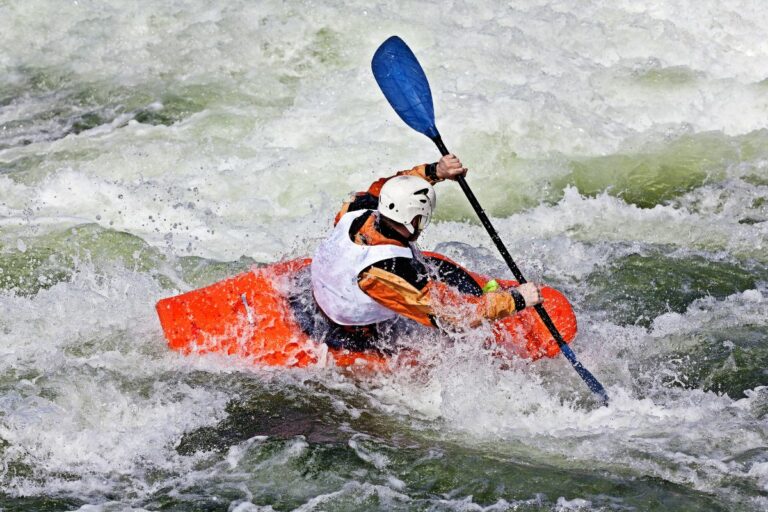8 Easy Ways to Improve Kayak’s Tracking Quickly and Efficiently
While tracking is such a simple concept, getting it right for many new kayakers can be challenging. Luckily there are easy ways you can improve your tracking skills quickly and efficiently.
What are easy ways to improve your kayak tracking? Easy ways to improve your kayak’s tracking include installing a rudder or a skeg to help combat the wind that causes the kaya to turn and go off track. You also need to make sure your kayak is in good condition and work on executing proper paddling techniques and maintaining a good body posture.
Keep reading to learn more useful tips that will help you quickly improve your tracking.
Table of Contents
8 Pro Tips to Improve Your Kayak’s Tracking Quickly
1. Choose The Right Type of Kayak
The kayak’s design greatly impacts its ability to track well.
Kayaks that are designed with longer hulls are known to track better. But they’re not as efficient regarding maneuverability, so turning the kayak to one side can be tricky. They’re the most suitable for beginners.
If you want a kayak upgrade, check my picks for the best kayaks under $500 here.
2. Installing a Rudder or a Skeg for Proper Tracking
A rudder is a moveable fin that drops down the back of the kayak. A skeg extends and retracts from the bottom of the kayak and acts similarly to an anchor.
Both are used to aid in steering the kayak and counteract different factors that can cause your kayak to go off course.
You can use the rudder or skeg when winds push the kayak from the rear, making it hard to track and stay in a straight line. You can also use a rudder or skeg when the waves are coming to the side of the kayak, making it difficult to keep the kayak straight.
For a full guide on proper tracking, check out this simple guide on kayak tracking.
3. Choose The Right Type of Paddle Blades

Three main paddle blade types are Feather blades, asymmetrical blades, and curved blades.
Asymmetrical blades are good for tracking straight, while curved blades are good for creating more powerful strokes.
Feather blades, on the hand, are the most common with beginners.
They’re easier to use, and they reduce wind resistance which gives the kayak more momentum to keep it moving forward in a straight line.
As you gain more experience, you can switch between different types of blades to see which one fits your paddling style better. You should also make sure you have a Kayak paddle and not a canoe paddle, as the two are quite different, as explained in this canoe vs kayak paddle guide.
4. Choose The Appropriate Size for Your Paddle
Choosing the appropriate paddle size can help you improve your paddling technique and avoid getting fatigued quickly.
This generally depends on the size of your torso, as it determines the distance between you and the water when you’re in the kayak. So, the longer your torso is, the longer paddle needs to be.
However, many expert kayakers recommend using a shorter paddle for beginners who are working on improving their tracking.
A shorter paddle is easier to use, and it enables you to track better as it can be used as a rudder. The ideal length for a paddle is about 210-220 cm for a kayak that is under 25 inches in width.
If you are a beginner, you may also want to consider using a paddle leash so you are more comfortable paddling without the fear of losing your paddle in the water.
You can check out my recommended paddle leashes here where I also discuss when you need a paddle leash and when you don’t. Definitely worth 3 minutes of your time.
5. Make Sure You’re Holding Your Paddle Correctly
The position of your hands when holding the paddle should be shoulder-width apart, and your elbows need to be at a 90-degree angle. This position is commonly known as “the paddler’s box.”
It’s a good idea to use some tape to mark down where your hands are positioned on the paddle so you can ensure you’re always holding it the same way every time you use it.
You can also check this simple video below to see how to use a Kayak paddle properly.
6. Practice Properly Executing Different Paddle Strokes
First, you need to learn that kayakers use different kinds of paddle strokes to achieve different goals. It’s important to perfect all kinds of strokes to be able to control your kayak and track better.
To execute your strokes properly, you need to match your strokes on both sides of the kayak. This means you must ensure that your paddle is sweeping the water at the same distance from the kayak on each side.
You also need to ensure your paddle is hitting the water with the same force on each side. If your paddle dips into the water a little deeper on one side, more momentum will be generated from that stroke resulting in throwing your kayak off track
7. Maintain A Good Body Posture
How your body is positioned in the kayak has a significant impact on how well your kayak tracks.
Keep your body upright and bend your legs slightly to improve your posture. Also, try to rely more on your core muscles to power your strokes while relying on the muscles in your shoulders for extra support. This will allow you to rotate your upper body better and give your arms more freedom to paddle efficiently.
Keep your feet resting on the footrests, and do not push too hard on either of them because applying too much force on one footrest while paddling can cause your kayak to go off track.
You must also distribute your weight evenly by rotating your hips to shift your body weight and avoid putting pressure on one side of the kayak.
8. Keep Your Kayak in A Good Condition
Old or cheap kayaks are more prone to damage from use.
Shallow cuts and small scrapes won’t affect your kayak’s ability to track well. However, you need to be concerned about larger scrapes and deeper dents, as these will affect how the water flows against the bottom of the kayak and cause the kayak to track badly.
So, you need to maintain your kayak properly and regularly check it for any signs of damage to be able to make repairs accordingly.
Some people try to improve their kayak’s stability with some not-so-great methods, like filling it with foam, but you can learn why filling a kayak with foam is not such a great idea here.
Instead, make sure to check out the instructions in my guide to storing kayaks inside properly, and you should be fine.
Related Questions
How to Install a Rudder to A Kayak?
To install a rudder to a kayak, you need to attach the mounting bracket to the stern by drilling a hole in the kayak and then slide the rudder into the mounting bracket. Next install the lift lines in their designated holes and make sure they can move freely. Finally, insert the line through the holes in the back and connect them to the foot pedals on each side.
How to Fix the Scrapes On the Bottom of Your Kayak?
You can fix any scrapes on the bottom of the kayak by sanding the hull using a 400-grit sandpaper. You can also apply a gel coat to make the hull smooth and reduce friction. Fixing the scrapes would help improve the ability of the kayak to track well.
Kayak your way to Freedom
- On a budget? Check out the best fishing kayaks under $500 here and the best Fishing Kayaks under $1,000 here. Or Check the best Cheap Kayaks here.
- Going fishing? Here are the best Ocean fishing kayaks, and here are the best River Fishing Kayaks.
- You can also find the best Fly Fishing Kayaks here and the best Bass Fishing Boats here.
- A bit experienced? Check out the best modular kayaks here and the best tandem fishing kayaks here.
- Looking for something special? Check out my favorite Ducky kayaks here.
- Navigate your way with these awesome and beginner-friendly Kayak compasses.
- Going Hunting? These Duck hunting kayaks will give you an unfair advantage!
- Have a need for speed? These motorized kayaks will get you moving.
- Protect yourself from the sun with these Kayak shades, and make your kayak more comfortable with these Kayak seats.
- Keep your feet dry and warm with these superb Kayaking shoes.
- Going Kayaking in cold water? Stay warm with these Kayaking gloves.
- Paddle Less, Fish More with the Best Kayak Motors
- Looking to get a trolling motor on your kayak? Check out the best kayak trolling motor mounts here.
Helpful Resources
Canoe posture characteristics in men’s 500 m canoeing
If you like this article, please share it or pin it, you can find the share buttons below. We will really appreciate it ❤️

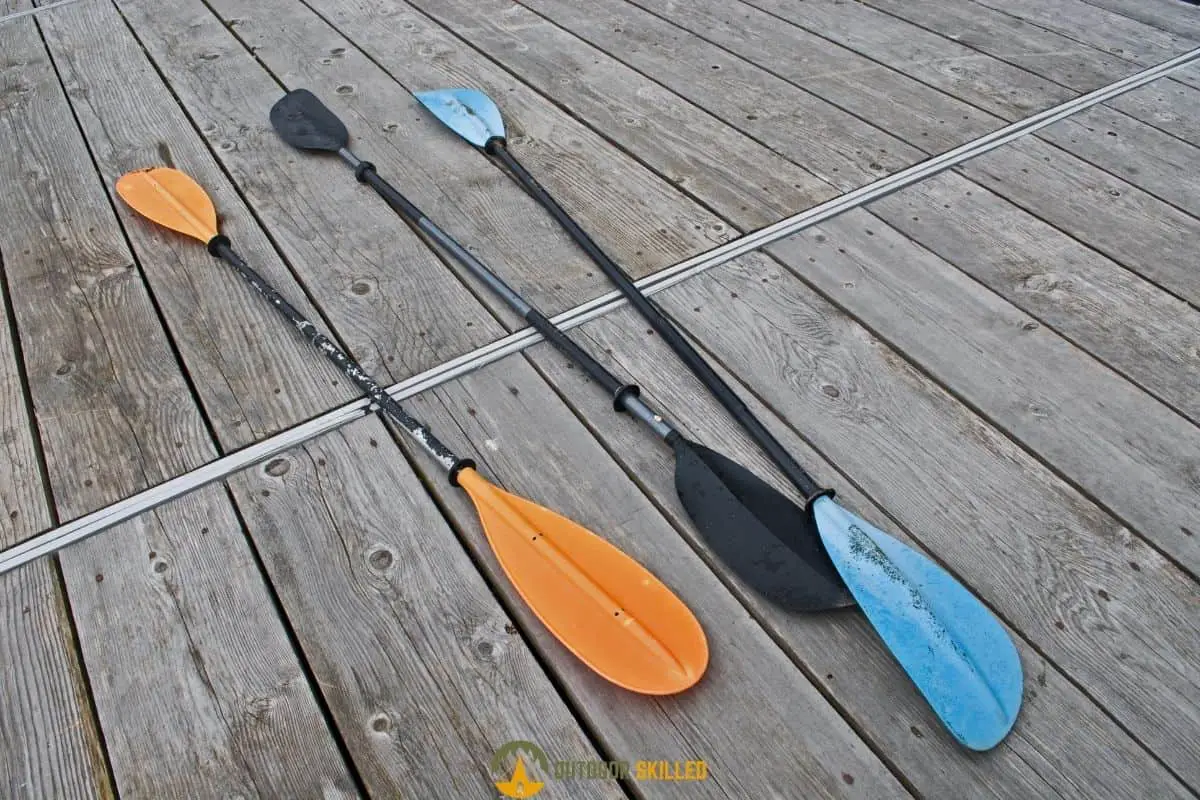
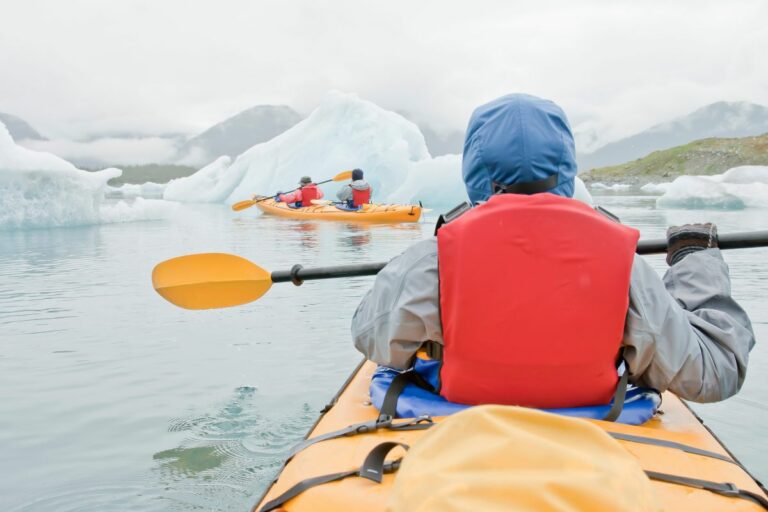
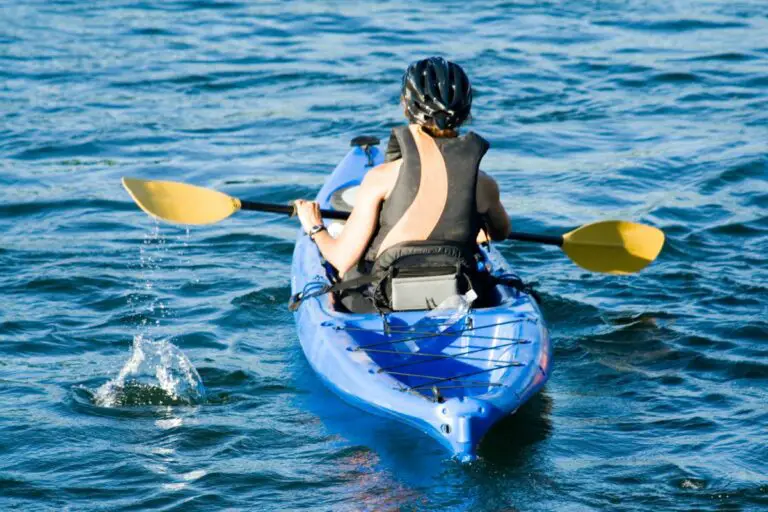
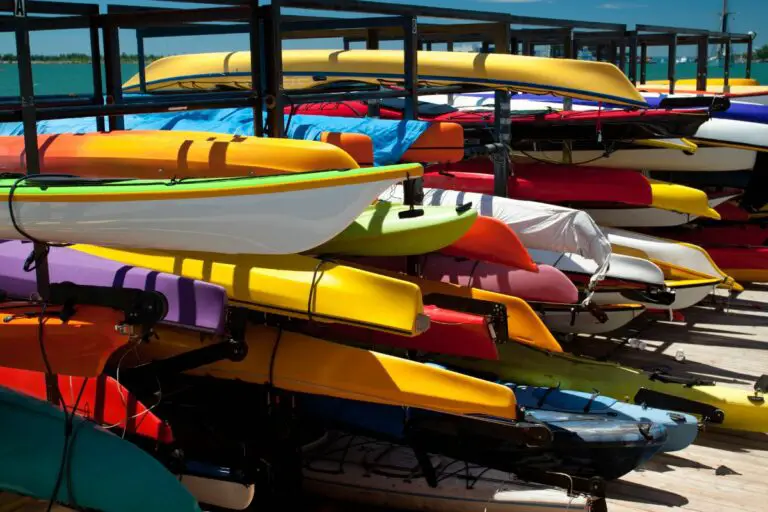

![What Is the Average Kayak Speed? [Max Speed Calculator Included]](https://outdoorskilled.com/wp-content/uploads/2023/02/kayaking-23-768x512.jpg)
